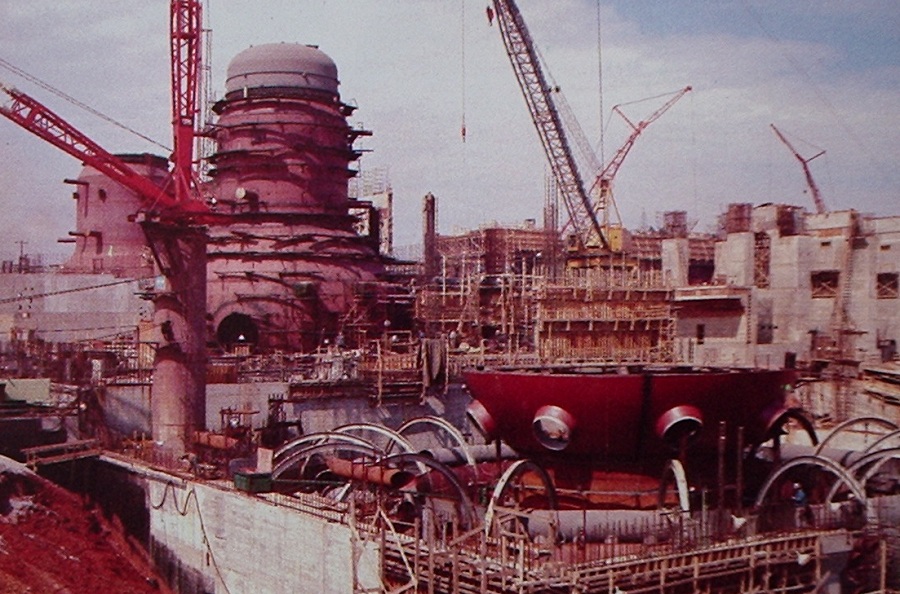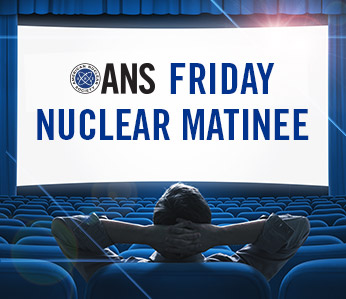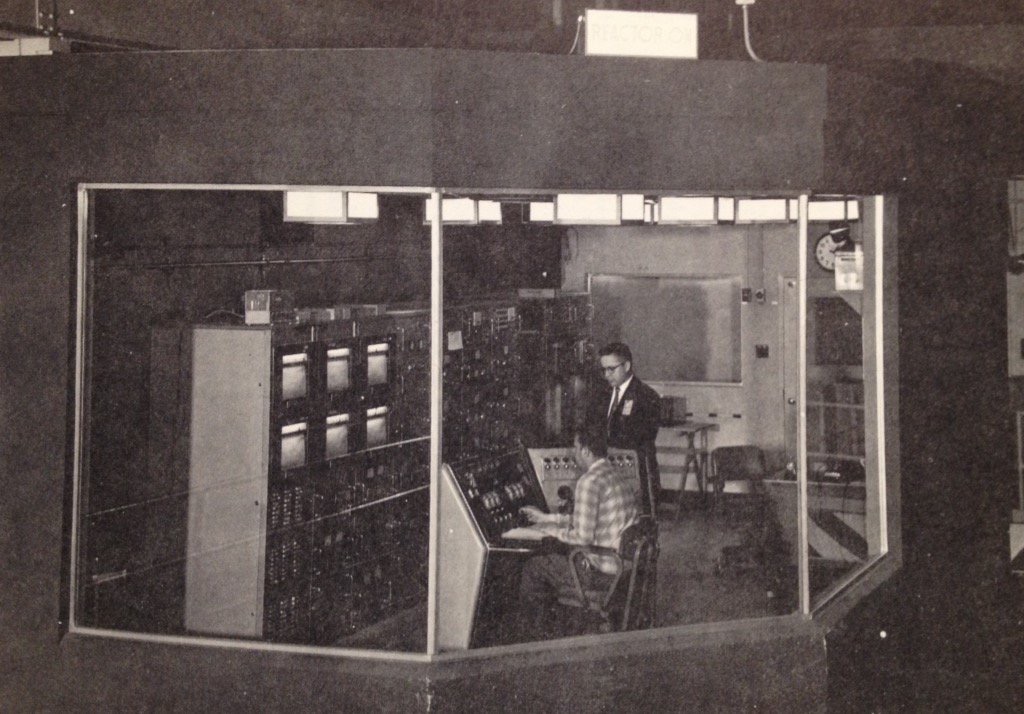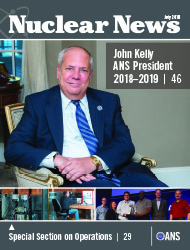A message from Westinghouse Electric Company Parts Business
Westinghouse delivers advanced, plug-in-ready power supply solutions that eliminate obsolescence and keep nuclear plants running safely, reliably, and future-ready.

A message from Westinghouse Electric Company Parts Business
Westinghouse delivers advanced, plug-in-ready power supply solutions that eliminate obsolescence and keep nuclear plants running safely, reliably, and future-ready.
Before diving deep into strategies for how to ace the Nuclear P.E exam, let's briefly review the three main reasons of why it's essential for nuclear engineers to pass the professional engineering (P.E.) exam.
On Episode 12 of RadioNuclear, we discuss how fear-mongering stories about nuclear power plants in the path of a hurricane are irrelevant, the Oyster Creek Shutdown, and lastly, how nuclear power should be used geopolitically.
There's no denying that nuclear energy in the United States has traveled a rough road over the past several years. Plants have closed, legislation to deal with nuclear waste has stalled, and at times it seems that nuclear energy has been written off by policymakers and the public alike.
This week has brought two news items - one positive and one negative - that echo a theme which runs down the history of nuclear energy like a spine. The story goes that the original, longest-tried technology works while other, theoretically superior but technically vastly more difficult concepts continue to run into roadblocks; that story remains unchanged today, in the face of these new developments.
Last time, we looked at the U.S. Atomic Energy Commission's (AEC) findings on the drivers of nuclear plant construction delay and cost overrun up through 1969. We'll complete our analysis of the AEC findings on 1969 in this installment and move on to 1970.
Hurricane Florence, a potentially devastating Category 2 hurricane is on track to make landfall in the Carolinas sometime within 24 hours after this morning, Thursday, September 13. With winds up to 130 miles per hour, Florence could be the most powerful storm to hit so far north in the United States - ever.

Photo showing the TVA Browns Ferry Nuclear Plant under construction at the end of the 1960's. This was TVA's first nuclear plant, which attained some notoriety for having been ordered in what previously had been considered "coal country."
Another, modern-day report has come out which in part discusses the problems encountered in nuclear plant construction - and discusses some suggested fixes for these. I welcome such research and reporting, but I have begun to wonder how many people realize that all of these studies have been done before and, more importantly, that the conclusions of those studies apply exactly to today's situation.

Our latest Friday Matinee video is a fascinating time-lapse produced by Georgia Power to show the entire process of installing one of the two steam generators at its Plant Vogtle expansion.
A sharp increase in reporting on KEPCO (the national Korean near-monopoly electric power provider) and KHNP (Korea Hydro and Nuclear Power, the nuclear wing of KEPCO) the last two weeks or so by the Korean press has revealed a drastic reversal in the fortunes of this once-shining figure of Korean progress and success, and further implies ripples that perhaps could turn back an already flagging national economy.
 Last week, the American Nuclear Society announced its new K-12 STEM education initiative Navigating Nuclear - Energizing Our World.
Last week, the American Nuclear Society announced its new K-12 STEM education initiative Navigating Nuclear - Energizing Our World.
August 10, 2018, marks the 100th birthday of one of the great men in nuclear power: Vice Admiral Eugene P. "Dennis" Wilkinson USN. He passed away in July 2013, a month before his 95th birthday.
In this final installment of the series on pool reactors we'll take a look at some remarkable images found in a 1956 brochure which shows some of the steps of the process in constructing the Ford Nuclear Reactor and attendant facilities at the University of Michigan. Under the leadership of Babcock & Wilcox (today, BWXT) this 1000 KWt facility was constructed in about 19 months. Reviewing the previous article in this series will be helpful in relating the construction photos.
In 2012, the Mars Science Laboratory (MSL) [1] successfully touched down on the Red Planet. Aptly named Curiosity, it brought with it scientific discovery instruments and exploration capabilities that only a nuclear-powered rover could realistically possess.

Control Room, Naval Research Reactor, circa 1958.
In the previous installment, we observed that some of the earliest pool reactors incorporated their instrumentation right on the moving bridge which supported the reactor core. As reactors increased in size and power and as exposure was considered, control was moved off the bridge onto the floor and then often into a control room (as seen above) in later designs. These control rooms could either be at operating floor height with direct view of the reactor, or separate in another area of the facility.
The author of a recent biography of Vice Admiral Dennis Wilkinson, the first commanding officer of the first nuclear-powered submarine, shares her recollections of him over their 33-year friendship.

Winters
 Dennis Wilkinson would have celebrated his 100th birthday on August 10, 2018. The life and career of the man who captained the first nuclear-powered submarine and the first nuclear-powered surface ship and was the first president and chief executive officer of the Institute of Nuclear Power Operations (INPO) have been captured in Ann Winters’s book, Underway on Nuclear Power: The Man Behind the Words, Eugene P. “Dennis” Wilkinson, Vice Admiral USN.
Dennis Wilkinson would have celebrated his 100th birthday on August 10, 2018. The life and career of the man who captained the first nuclear-powered submarine and the first nuclear-powered surface ship and was the first president and chief executive officer of the Institute of Nuclear Power Operations (INPO) have been captured in Ann Winters’s book, Underway on Nuclear Power: The Man Behind the Words, Eugene P. “Dennis” Wilkinson, Vice Admiral USN.
Because of his inherent drive, Wilkinson was often called a cowboy, maverick, visionary, innovator, and superb leader. As the first commanding officer of USS Nautilus, he was a major player in revolutionizing underwater warfare. Nautilus and its crew were immensely popular, at home and abroad, and in the 1950s became what we now call “rock stars.” Nautilus gave nuclear power celebrity status at a time when the United States and the world were grappling with Cold War issues.
From Part I, we learned that everything takes energy, and that removing steps in the energy conversion process can save energy. We even that there is potential to grow food directly with electricity. The question that arises from those suppositions is: how close are we to that reality?
Yesterday, I was reading an old (1970's) brochure published by ASEA-ATOM on district heating reactors. While looking at that material I remembered that now, today, there is at least one effort afoot today to use a simple pool reactor for district heating - a pretty sharp idea, actually. However, following that and spurred by a conversation on social media with Jessica Lovering, it occurred to me that the lowly pool type reactor, often the first kind of reactor many students have historically encountered in their trip through the nuclear universe, has not been given its due. With that in mind, let's take a look at pool reactors through historic photos and materials.
 Be sure to read the July Nuclear News president's profile - John Kelly: From Motor City to the Capital City
Be sure to read the July Nuclear News president's profile - John Kelly: From Motor City to the Capital CityBe sure to read the July Nuclear News president's profile - John Kelly: From Motor City to the Capital City
I am honored and energized to serve as the 64th president of the American Nuclear Society. I was born in March 1954 and ANS was founded in December 1954. While I am a few months older, we are both in our 64th year, and I believe our destinies have been closely intertwined from the beginning. Even though I knew in high school that I would be an engineer, it was not until I entered the University of Michigan in 1972 that I learned about the tremendous promise of nuclear science and technology to improve the lives of everyone on Earth. I have never had second thoughts about my choice of nuclear engineering, even though the Three Mile Island accident occurred 18 months before I received my Ph.D. from MIT. I want to thank all my colleagues, both here in the United States and around the world, who have inspired me, supported me, and validated my decision to enter the nuclear field. I especially want to thank my colleagues in the Nuclear Installations Safety Division for giving me the opportunity to serve the Society both within the division and now as president.